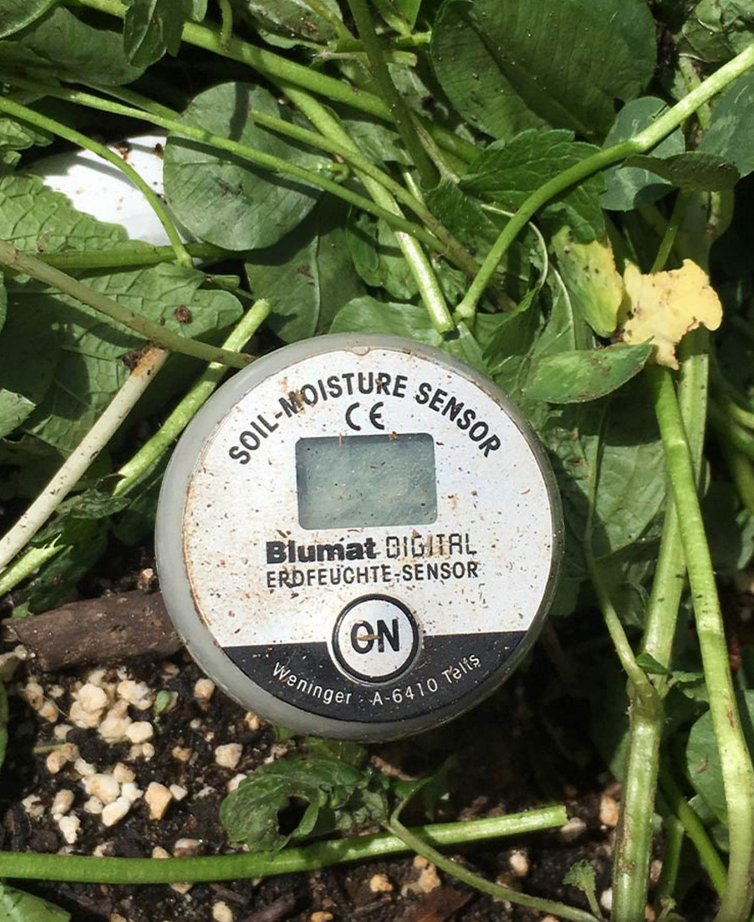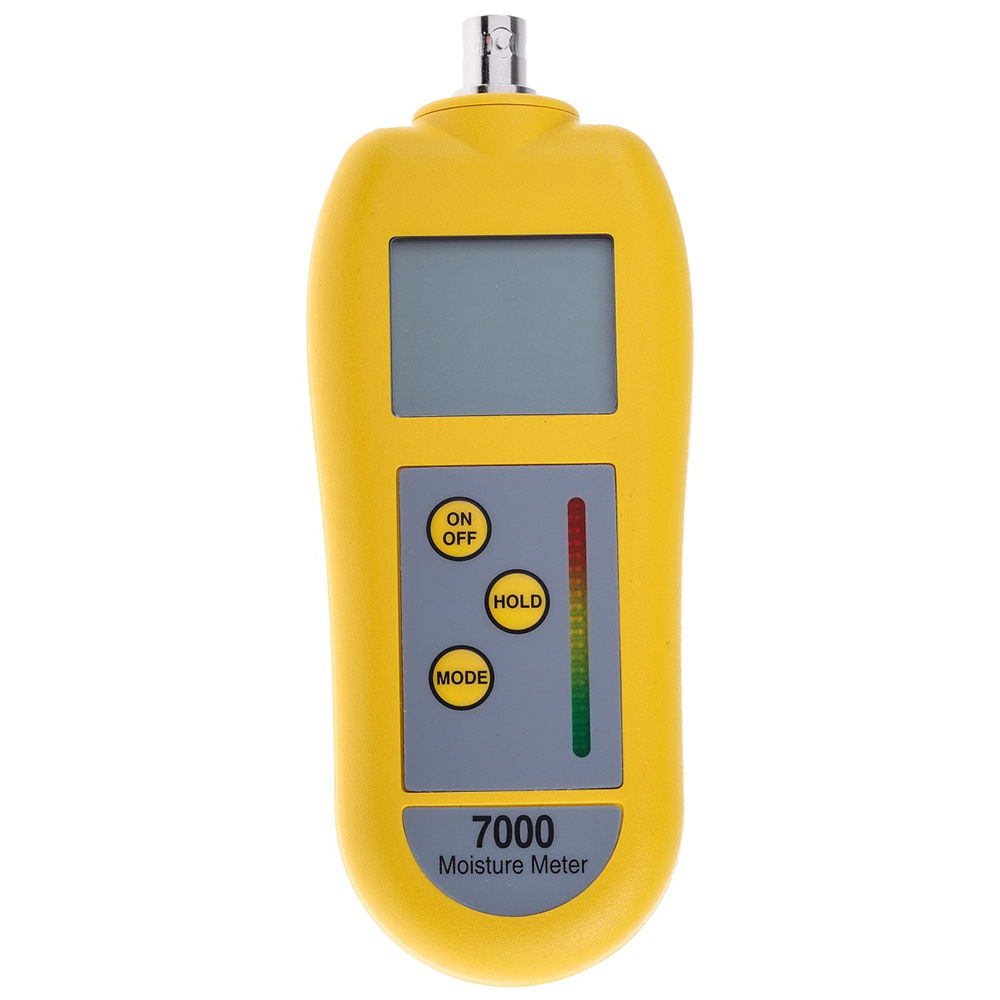Delve Into the Globe of Moisture Meters: Every Little Thing You Need to Know
In the realm of moisture meters exists a globe of precision and practicality that often goes undetected. These gadgets, while relatively straightforward, hold a wide range of info that can substantially affect various sectors and applications. Understanding just how moisture meters operate, the different kinds offered, and their diverse usages can shed light on their importance in ensuring high quality and efficiency. By discovering the ins and outs of moisture meters, one can reveal a useful tool that goes beyond mere dimension, providing understandings that can make a significant difference in countless fields.
Just How Moisture Meters Work
Moisture meters operate by determining the electric conductivity or capacitance of materials to figure out the moisture material existing. These meters are important devices throughout various markets, consisting of farming, woodworking, and construction. By utilizing different techniques such as pinless or pin-type modern technology, moisture meters supply exact analyses that aid professionals make notified decisions.
Pin-type dampness meters function by placing the sharp pins into the product being examined. On the various other hand, pinless dampness meters utilize electromagnetic signals to scan a larger location without creating any type of damages to the material's surface.
Despite the approach made use of, wetness meters play an essential role in avoiding concerns such as mold and mildew growth, structural damages, or product problems caused by excess dampness. Recognizing exactly how these meters job is crucial for making certain the high quality and stability of materials in various applications.
Kinds of Moisture Meters
Provided the critical duty dampness meters play in different industries, it is vital to recognize the different kinds offered to experts for accurately analyzing wetness degrees - Moisture Meter. There are mostly two major types of dampness meters: pinless and pin-type moisture meters

On the various other hand, pinless moisture meters use electro-magnetic sensing unit plates to scan a bigger area of the product without causing any kind of damage. This type appropriates for swiftly scanning large locations and is generally utilized for flooring, wall surfaces, and ceilings. Pinless meters are practical for taking analyses on completed surfaces without leaving any kind of noticeable marks.
Both types of moisture meters have their advantages and are selected based upon the particular needs of the task handy. Comprehending the distinctions between these kinds is important for professionals to make precise dampness assessments.
Applications Throughout Industries
With varied performances, dampness meters find extensive application throughout different markets, assisting professionals in making certain optimal conditions for products and frameworks. In the farming sector, wetness meters are important for figuring out the dampness material in grains, seeds, and hay, ensuring quality assurance and protecting against mold growth. Building experts rely upon you can try here moisture meters to evaluate the moisture levels in building materials like drywall, concrete, and timber, which is essential for keeping structural integrity and stopping concerns like rot or mold and mildew. The floor covering sector makes use of dampness meters to gauge the dampness web content in subfloors prior to mounting numerous flooring treatments, stopping pricey problems because of excess moisture. In the food sector, dampness meters are utilized to keep track of and manage moisture levels in items such as grains, nuts, and dried out fruits to preserve freshness and top quality. In addition, wetness meters play a vital role in the reconstruction and damage control industry by helping specialists deal with and identify water damages in structures without delay. Throughout these diverse sectors, wetness meters are important tools for ensuring the top quality, security, and longevity of various products and items.
Tips for Utilizing Dampness Meters
Utilize the wetness meter's calibration setups to guarantee exact readings when gauging the moisture web content in various products. Calibration is essential for the correct functioning of a moisture meter. Before each use, it is suggested to check and change the calibration settings according to the certain product being examined. Additionally, see to it the meter is readied to the proper dampness array for the product you are measuring to obtain the most accurate outcomes.
When making use of a pin-type wetness meter, place the pins to the suitable depth recommended for the product being examined. This ensures that the moisture analyses are extracted from the right depth within the material, providing an extra precise representation of its moisture content. For pinless moisture meters, bear in mind to keep appropriate contact with the product's surface area to get reputable readings.
On a regular basis inspect and replace the batteries in your dampness meter to stop inaccurate analyses as a result of reduced power. When not in usage to prolong its life expectancy and maintain its accuracy, Shop the meter in a dry and safe location. By complying with these suggestions, you can take full advantage of the efficiency of your dampness meter and get exact wetness material dimensions across various products.
Maintenance and Calibration
To ensure the accuracy of wetness web content measurements, routine upkeep and calibration of the moisture meter are crucial steps in its appropriate performance. Maintenance involves keeping the dampness meter complimentary and tidy from debris that could impact its analyses. It is necessary to follow the my company producer's standards for cleansing to stop damage to the gadget. In addition, normal calibration is necessary to verify the accuracy of the analyses. Calibration readjusts the dampness meter to make sure that it gives trustworthy and regular outcomes.
Calibration ought to be performed periodically, especially if the dampness meter is made use of regularly or in important applications where exact dimensions are needed. Several dampness meters include calibration tools or can be calibrated by professional solutions. Moisture Meter. It is advised to keep a log of calibration dates and results to track the efficiency of the wetness meter in time. By preserving and calibrating the wetness meter routinely, users can rely on the accuracy of the moisture web content dimensions acquired.
Conclusion

Finally, wetness meters play a critical role in different sectors by accurately determining the dampness content of materials. Comprehending just how these devices work, the various kinds available, and proper maintenance and calibration are necessary for getting reputable outcomes. Whether in agriculture, production, or construction, the usage of dampness meters aids ensure quality control and efficiency in processes.

In conclusion, dampness meters play a crucial role in numerous sectors by precisely determining the moisture content of materials.